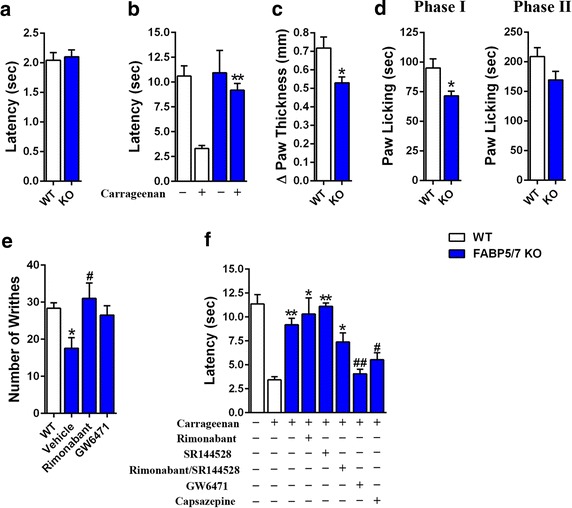Fig. 2.

Nociception in FABP5/7 KO mice. a Tail withdrawal latencies of WT and FABP5/7 KO mice in the tail immersion test (n = 6). b Paw withdrawal latencies in the hargreaves test in WT (white bars) and FABP5/7 KO (blue bars) mice before and 4 h after carrageenan injection. **p < 0.01 versus carrageenan injected WT mice (n = 6). c Paw edema in WT and FABP5/7 KO mice after carrageenan injection (n = 6). d Nociception during the first (left panel 0–5 min) and second (right panel 15–60 min) phases of the formalin test. *p < 0.05 (n = 9). e Acetic acid writhing in WT and FABP5/7 KO mice. The FABP5/7 KO mice received a subcutaneous injection of vehicle, 3 mg/kg rimonabant, or 4 mg/kg GW6471 45 min before acetic acid injection. *p < 0.05 versus WT mice; #p < 0.05 versus vehicle-treated FABP5/7 KO mice (n = 9–12). f Carrageenan-induced thermal hyperalgesia in WT and FABP5/7 KO mice treated with receptor antagonists. FABP5/7 KO mice were injected with vehicle, 3 mg/kg rimonabant, 3 mg/kg SR144528, 4 mg/kg GW6471, or 5 mg/kg capsazepine before carrageenan administration. *p < 0.05; **p < 0.01 versus carrageenan injected WT mice. #p < 0.05; ##p < 0.01 versus carrageenan injected FABP5/7 KO mice (n = 9–12)
